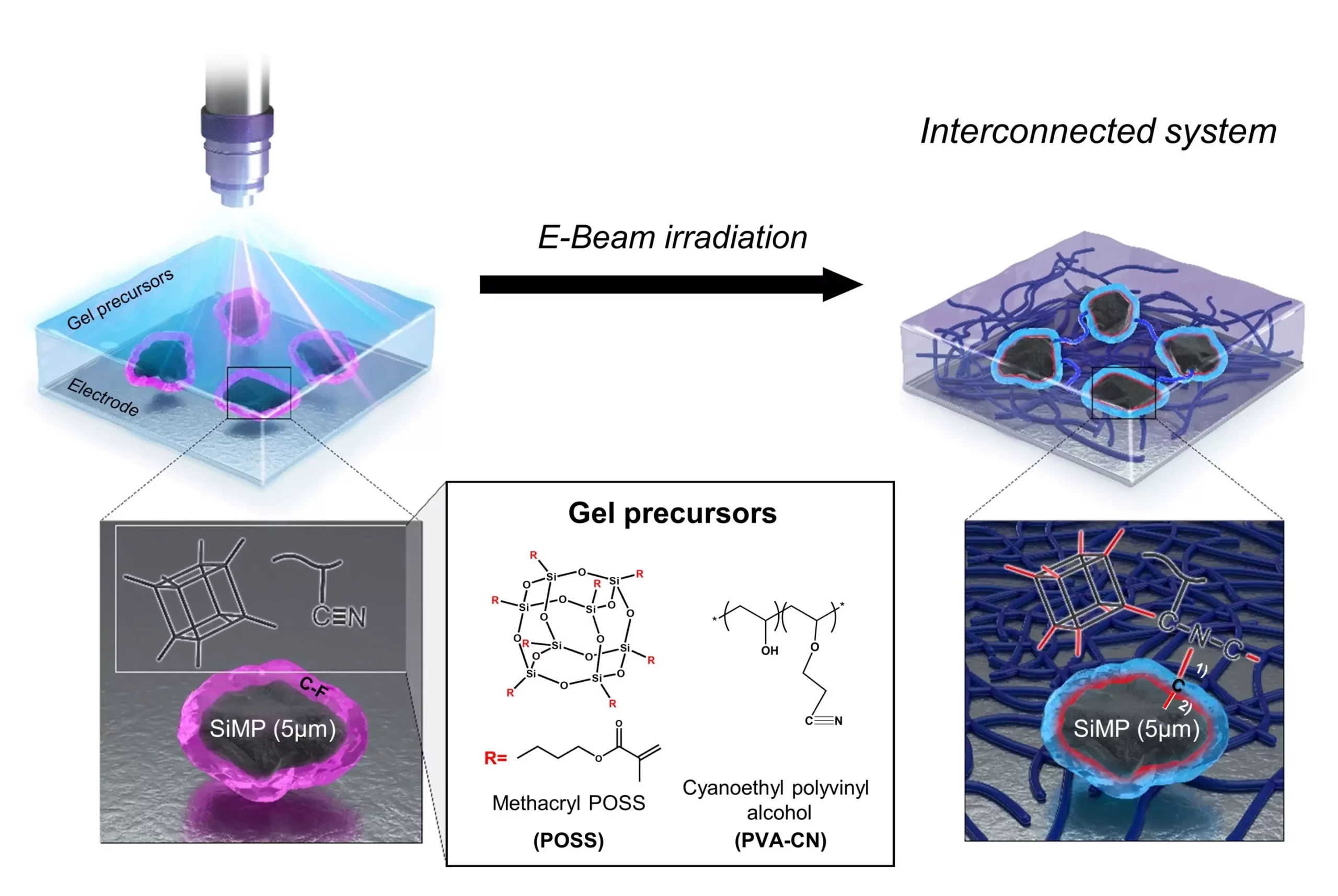The Consumer Electronics Show (CES) 2024 showcased remarkable futuristic advancements in AI and healthcare. However, at the heart of these innovations lies a game-changer in battery technology, enabling greater power efficiency. Among various applications, the electric vehicle (EV) sector has witnessed intense focus on battery advancements. While today’s EVs can travel approximately 700km on a single charge, researchers aim to push the limits to a groundbreaking 1,000km battery range. This pursuit has led researchers to explore the use of silicon as an anode material in lithium-ion batteries for EVs. Although silicon holds immense potential, its practical application poses significant challenges that researchers have been relentlessly working to overcome.
Silicon’s high storage capacity makes it an attractive proposition as a battery material. However, its volume expansion during charging (which is more than three times) and contraction during discharging impede its overall efficiency. Researchers have experimented with nano-sized silicon particles (10-9m) to mitigate this issue, but the complex production process and high costs make it an impractical solution. Micro-sized silicon particles (10-6m), on the other hand, offer a relatively more cost-effective and energy-dense alternative. However, the expansion issue becomes more pronounced during battery operation, limiting its viability as an anode material.
Enter Professor Soojin Park, Ph.D. candidate Minjun Je, and Dr. Hye Bin Son from the Department of Chemistry at Pohang University of Science and Technology (POSTECH). They have successfully developed a next-generation high-energy-density Li-ion battery system using micro silicon particles and gel polymer electrolytes. The researchers’ groundbreaking work is published in the journal Advanced Science.
To address the challenges associated with utilizing silicon as an anode material, the research team employed gel polymer electrolytes in their battery system. Unlike conventional liquid electrolytes, gel electrolytes have a solid or gel-like state, offering greater stability. These electrolytes are characterized by an elastic polymer structure that enhances their overall stability compared to liquid counterparts.
The team used an electron beam to create covalent linkages between micro-silicon particles and gel electrolytes. These linkages help disperse the internal stress caused by volume expansion during battery operation, improving the structural stability of the micro silicon particles. This breakthrough has allowed the researchers to overcome the limitations of using larger silicon particles, as they exhibited stable performance even with particles that were a hundred times larger than those used in traditional nano-silicon anodes.
The battery system developed by the research team demonstrated remarkable stability and performance. The silicon-gel electrolyte system exhibited ion conductivity comparable to conventional batteries that use liquid electrolytes, with an approximate 40% improvement in energy density. This achievement is significant considering the straightforward manufacturing process of the battery system, making it ready for immediate application.
Professor Soojin Park emphasized the impact of their findings, stating, “We used a micro-silicon anode, yet we have a stable battery.” This breakthrough not only paves the way for more efficient and cost-effective battery systems for electric vehicles but also holds promise for other applications requiring high-energy-density batteries.
The development of a pocket-friendly and stable high-energy-density battery system using micro silicon particles and gel polymer electrolytes brings us closer to realizing the full potential of electric vehicles. With longer battery ranges, EVs become more viable for everyday use, eliminating range anxiety and promoting wider adoption. The advancements in battery technology showcased at CES 2024 are a testament to the relentless efforts of researchers worldwide in driving innovation and revolutionizing the transportation sector.
The breakthrough achieved by the research team at POSTECH in developing a battery system using micro silicon particles and gel polymer electrolytes is a game-changer for the electric vehicle industry. The practical and cost-effective nature of their solution, coupled with the significant improvement in energy density, opens up new possibilities for more efficient and powerful batteries. As we continue to push the boundaries of battery technology, the future of electric vehicles looks increasingly promising.


Leave a Reply